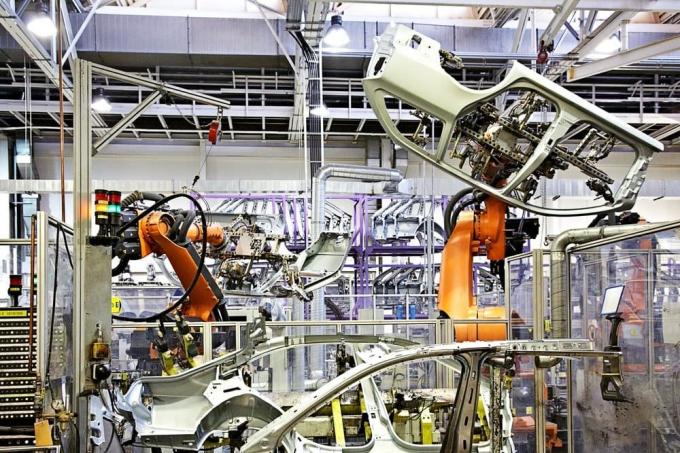The Economic sectors They are those that divide the economic activity of a territory, they are those that attend to the types of Productive processes that encompass the jobs in general that focus on the elaboration of material goods and services.
Each individual performs a different job, since some are those who cultivate the land to obtain the fruits, there are those who transform them, process them and they pack them, others are the ones who transport them to the different shops and finally there are those who sell them so that people can consume.
Advertisements
For this reason, it can be said that there is a large number of workers, who have been classified into different groups, where one predominates over the other and each provides the level of economic development that each has society.

Advertisements
In this article you will find:
Classification of economic sectors
These sectors contain all the exploration stages that comprise the natural resources that reach the industrialization, the preparation of consumption, the distribution and the commercialization of products or services.
Its classification is very useful so that you can understand the relationship of production and trade activities, of the same mode provides an understanding of the impact that a country's economic policies have on some specific divisions economic. Their classification is detailed below:
Advertisements
Primary sector

In this sector, the activities that are responsible for the extraction of resources in their natural state. Here agricultural, livestock, forestry, mining, fishing and hunting activities are carried out. The products generated in this sector are then used as production materials (or raw material) in different industrial processes and are also final goods for consumers.
More information here: Primary sector.
Advertisements
Secondary sector

This sector is related to companies and jobs that have the ability to transform raw materials into ready-to-eat products. It includes the light and heavy industrial sector. Among the manufactured products you can find footwear, furniture, processed foods, cars, electronics, clothing, plastic products, hygiene or beauty, among others.
More information here: Secondary sector.
Advertisements
Third sector

In it, the presentation of services is executed, which are considered as part of intangible assets such as education, banking, communications, commerce, health, transportation, entertainment and legal services, all can be found in both the public and private sectors and are the sectors with the highest number of employees, especially in the countries developed.
More information here: Third sector.
Quaternary sector

It is the sector that subdivides the tertiary sector, since it focuses on the different economic activities that are based on intellectual work and non-repetitive work. Services include research and development, consulting, information technology, and financial planning, among others.
Quinary sector
This sector is also another subdivision of the tertiary sector, where the design, management and interpretation of ideas and projects are carried out. All kinds of data and technology are used here for decision making focused on the official work of government, business executives and technology leaders.
Characteristics of the economic sectors
Among the most important characteristics are:
- These sectors are usually divisions of the various economic activities that are grouped depending on their common characteristics.
- They can facilitate the analysis and study of economic production, because they can classify activities that are similar and also that they can compete or complement each other.
- They effectively study their effect on public investments or taxes in relation to the work performed in the land for primary activities, which could cause some instability in international trade and the industrialization of the economic sector according to their specialization
Within this sector, it is common for economic activities to have certain differences according to their specialization, which gives rise to the following economic sectors:
- Agricultural sector: It belongs to the primary sector.
- Industrial sector: Corresponds to the secondary sector.
- Service sector: It is included in the tertiary sector.
- Commerce sector: Focuses on wholesale trade, retailers, chambers of commerce, shopping malls, market places and all services that include commercial activities of national products and international
- Mining and energy sector: This sector includes all companies that work in mining and all types of energy activities.
- Financial sector: Refers to the organizations that are in charge of executing banking and financial activities, pension funds, insurance companies, trust companies, etc.
- Communications sector: Includes companies and organizations linked to the media of advertising companies, publishers and newspapers, among others.
- Construction sector: Refers to companies and organizations that work all on the construction, the producers of materials that are used in construction and are worked by engineers or architects.
- Transport sector: This sector includes freight, public, land service, air, maritime transport, etc.
- Solidarity sector: It is made up of cooperatives, health solidarity companies, family compensation funds, among others.
Importance of economic sectors
With the above, it can be determined that any of the types of sectors can be found within the development economic of a territory, since all are of utmost importance for the supply of the basic needs of the people.
They are also essential for the efficient production of products in a state and for the high rate of jobs generated by these economic sectors. Within some countries, its best production is that of the primary sector.
However, in other nations the secondary and even the tertiary works better, because it helps merchants to generate satisfactions to the needs of its customers due to the large amount of production in its region or due to the importation of various products or services.
It is undoubted that these economic sectors are totally fundamental so that a certain country can enjoy a progressive and stable economy.


